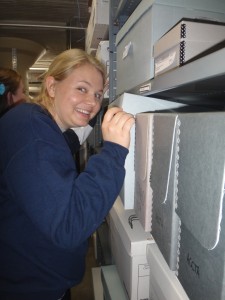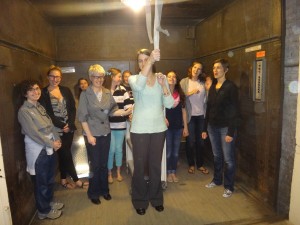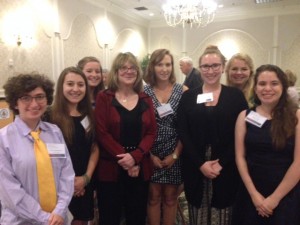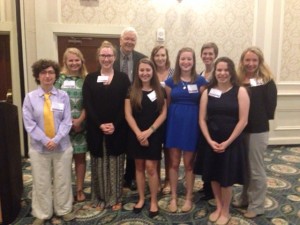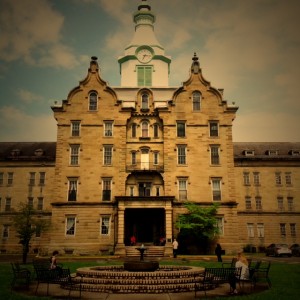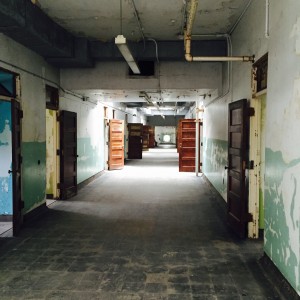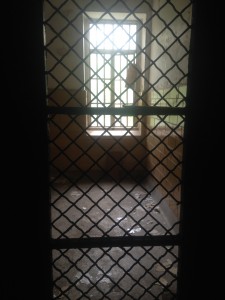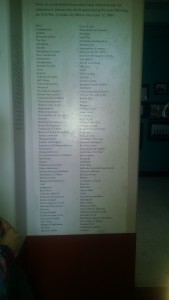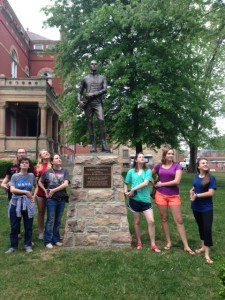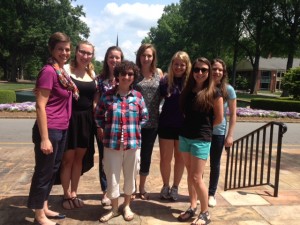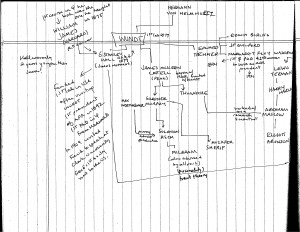The day we have all been waiting for arrived on Tuesday! We had our first full day at the Cummings Center for the History of Psychology. We started out with a tour of the museum where we nerded out over all of the cool things on display. Milgram’s Shock Box! Bandura’s Bobo Doll! Tichener’s regalia (which he taught his classes in – can you imagine?!) Harlow’s wire mother monkey heads! Skinner’s air crib! It was hard to know where to look.
Then we had a behind the scenes tour and saw where we will be working and learned about the renovations that will begin right after we leave.
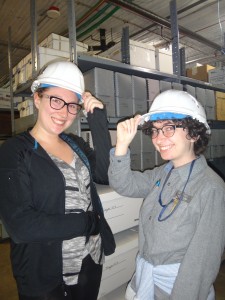
Safety first! (Actually, hard hats were not necessary. But they made Alissa and Dov look very official.)
Best of all, we found the boxes that we will be working with!
After lunch,we hauled the boxes out of the basement…
…and started to broadly categorize the types of items in each box. So far we have found several reprints, manuscript drafts, some slides, several awards, and lots of correspondence. It was hard to resist getting sidetracked by reading every page! (That will come later).
What will tomorrow bring??

